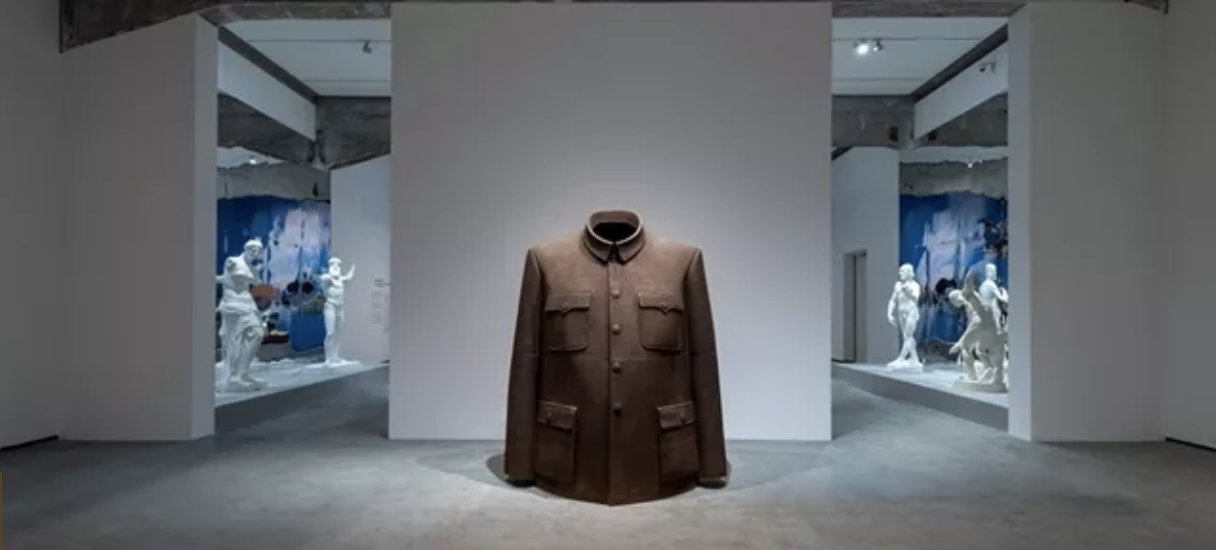 Photo: “Echo of System: Sui Jianguo 1997-2019”.
Photo: “Echo of System: Sui Jianguo 1997-2019”.
Since 1997, Sui Jianguo has explored the rich contexts of “classicism, realism, modernism, political pop, conceptual art, and post-conceptualism” and he has tried multiple type of expressive media such as sculpture, performance arts, installation, and moving images. Now, he continues to develop in the era of “3D printing” and “Industry 4.0”. It can be said that he has stationed countless personal coordinate points on the huge map of art and the seemingly indistinct “system” has gradually become clear.
Sui Jianguo’s solo exhibition “SYSTEM” was held in Shenzhen, China in January 2019, an accumulation of Sui’s art from the past decade.
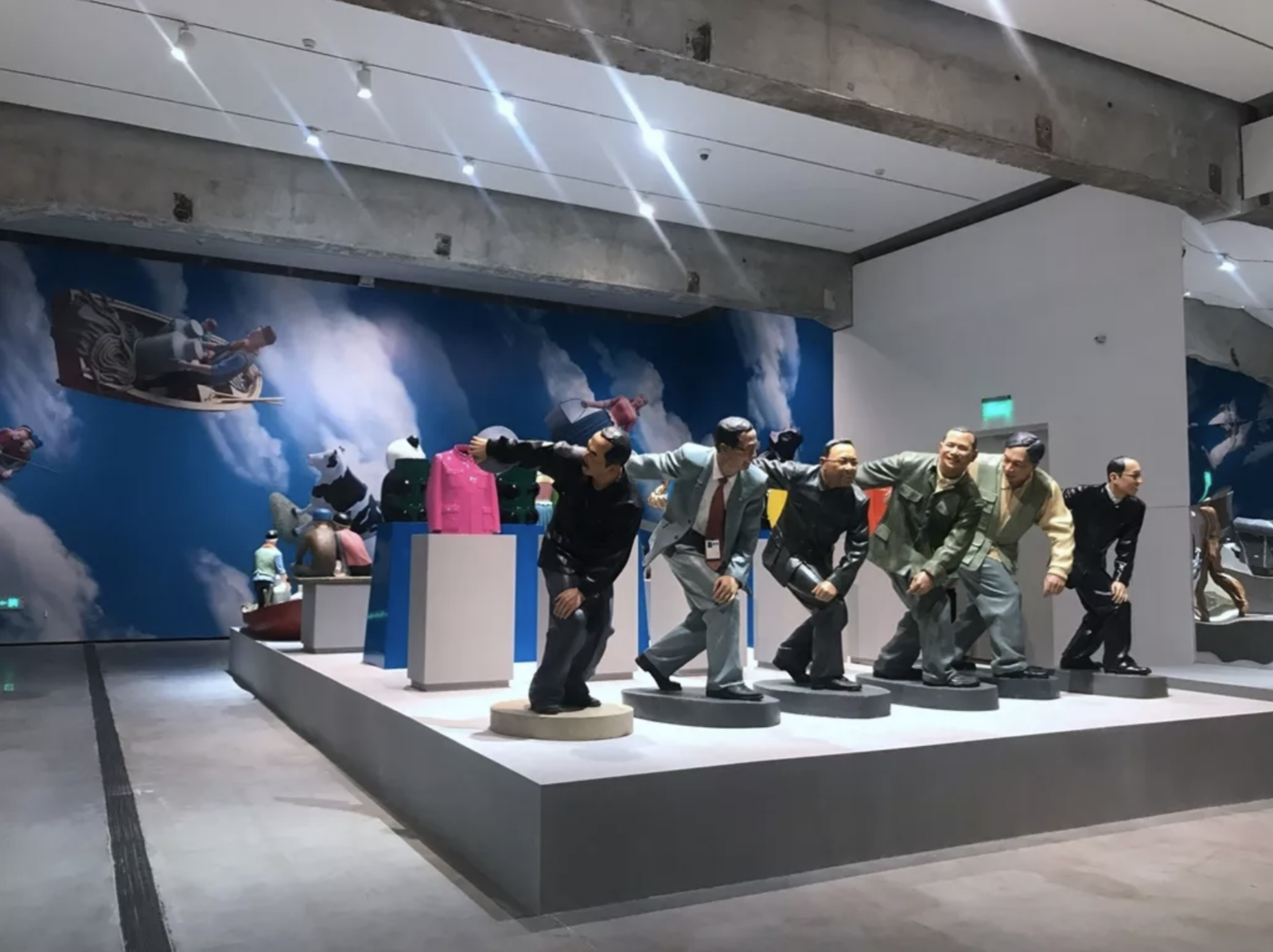
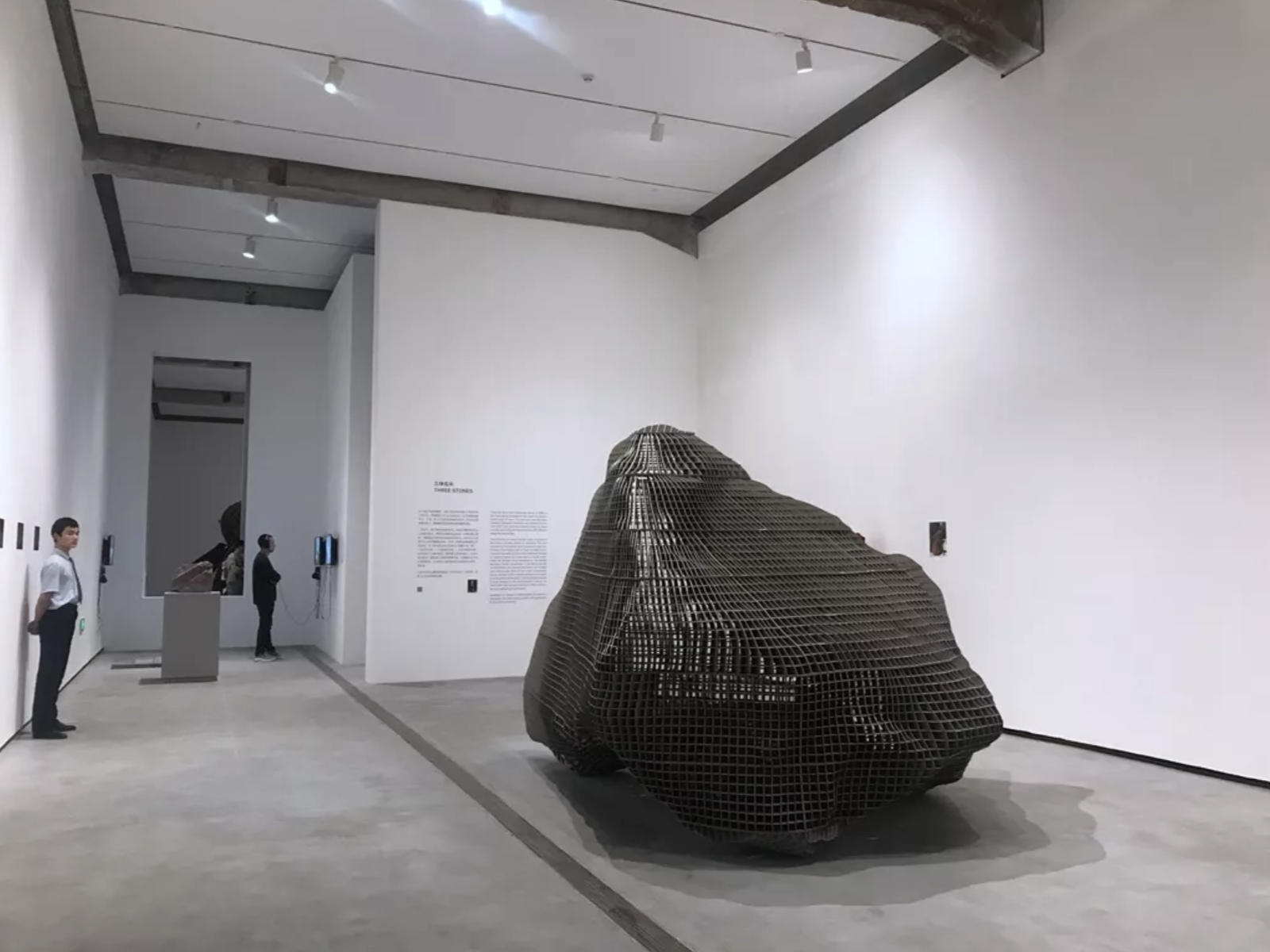 Photos: Exhibition View of ECHO OF SYSTEM
Photos: Exhibition View of ECHO OF SYSTEM
In September, the same curator, Cui Cancan, and his team brought “Echo of System: Sui Jianguo 1997-2019” to the Beijing Minsheng Art Museum. The exhibition features six sections interspersed with several subtitles and more than 200 works, making it the largest phrasal retrospective in his artistic career to date. It was the first time the museum showcased the creations of only one artist on all three floors.
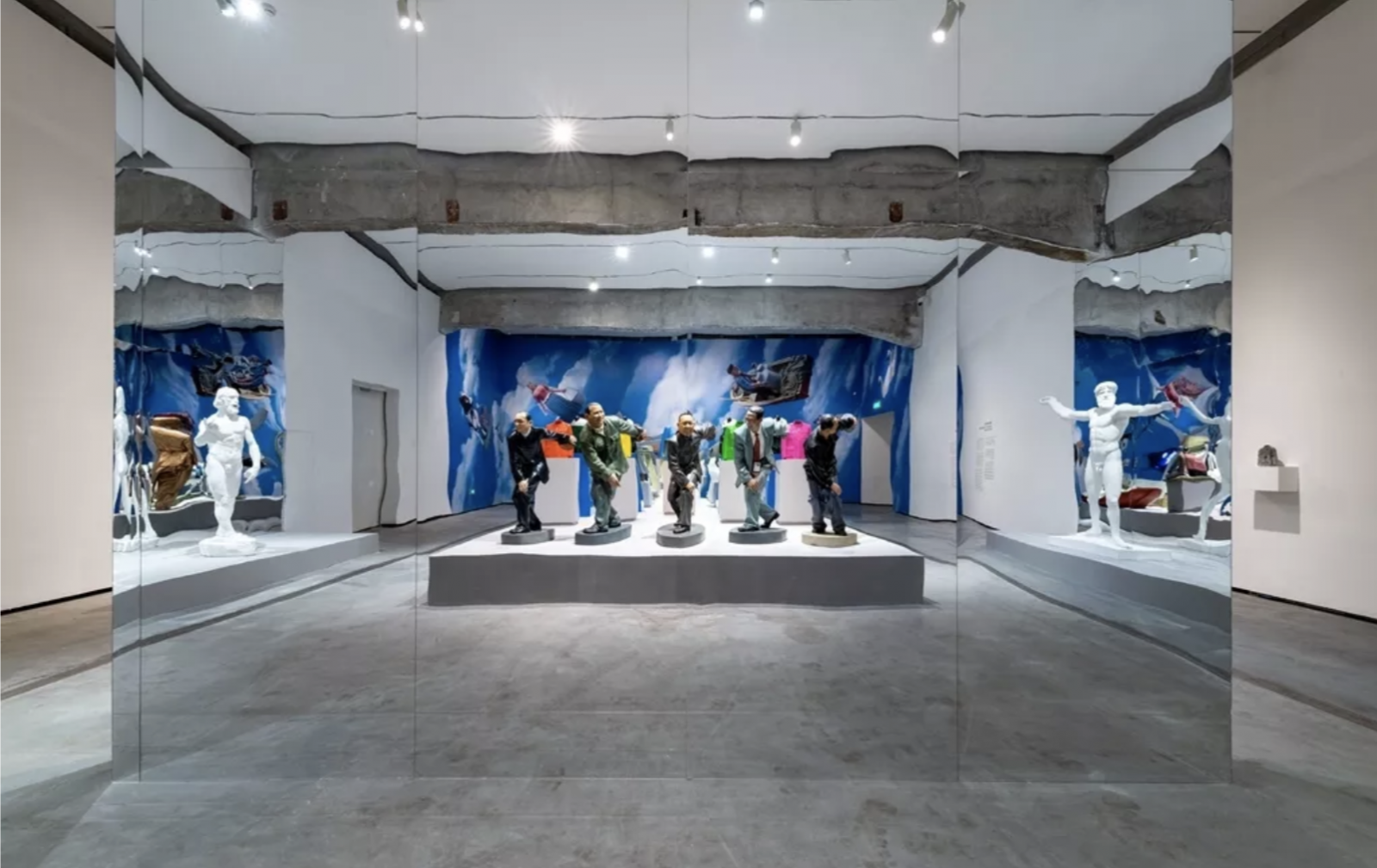
 Photo: Exhibition View of ECHO OF SYSTEM
Photo: Exhibition View of ECHO OF SYSTEM
The exhibition inspired a variety of interpretations. It provided an outstanding representative and view of a Sui’s work in retrospect, simultaneously encouraging its viewers to reflect on the overall development of Chinese contemporary art.
Over the last 20 years, what kind of system did Sui Jianguo construct and how was it explored?
“The revolutionary era is over, but none of the Chinese have truly taken off their Mao Suits.”
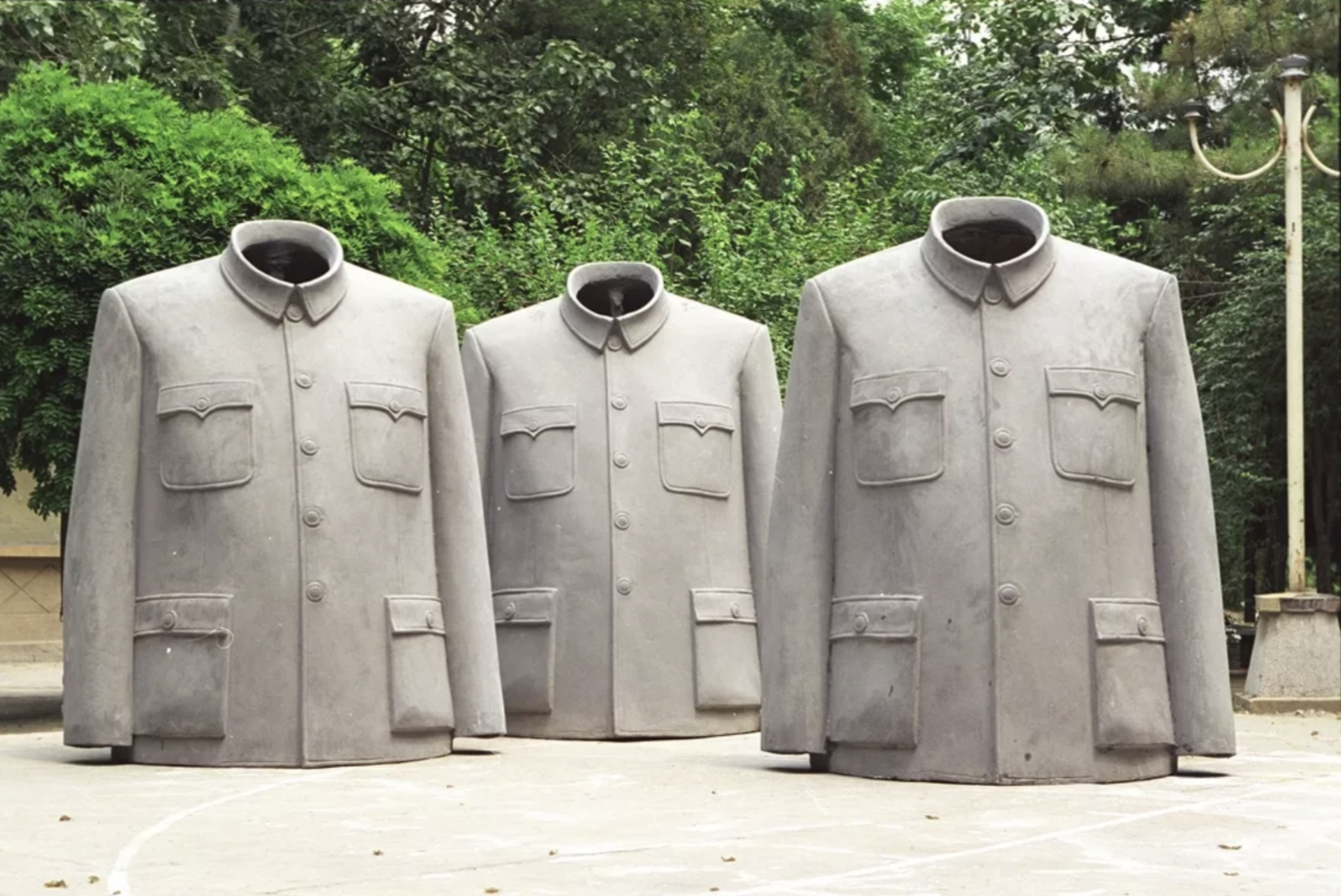 Photo: Sui Jianguo, Legacy Mantle, 1997; fiberglass, 240 × 160 × 130cm
Photo: Sui Jianguo, Legacy Mantle, 1997; fiberglass, 240 × 160 × 130cm
Sui Jianguo was born in Qingdao, China’s Shandong Province, in 1956. He graduated from the Department of Sculpture, Central Academy of Fine Arts (CAFA), with a master’s degree in 1989 and he remained at CAFA as a teacher. In 1997, as curator Cui Cancan referred to his work as this, “was not a starting point for Sui Jianguo, nor for sculpture art in China. More or less, it was a time when experiences were superimposing and trends in literature and art were occurring repeatedly.” The year 1997 means a lot to Sui because it was in this year that he came out with “The Legacy Mantel” which was included in the history of Chinese contemporary art and it became a symbol of art of the time.
In his early 40s, Sui Jianguo served as Director for the Department of Sculpture at the Central Academy of Fine Arts. Together with the teaching team, he reflected on and analysed the basis of the previous experience model while conducting research in universities at home and abroad. It is the first time that he has introduced such concepts as “modernism sculpture, conceptual sculpture, and postmodernism sculpture” into the education programme in the Department of Sculpture. On the occasion of the 80th anniversary of CAFA (in 1998), he succeeded in comprehensively promoting the teaching reform of sculpture. During the period around 1997, Sui Jianguo began to explore art in a broader way and began a variety of trans-boundary experiments.

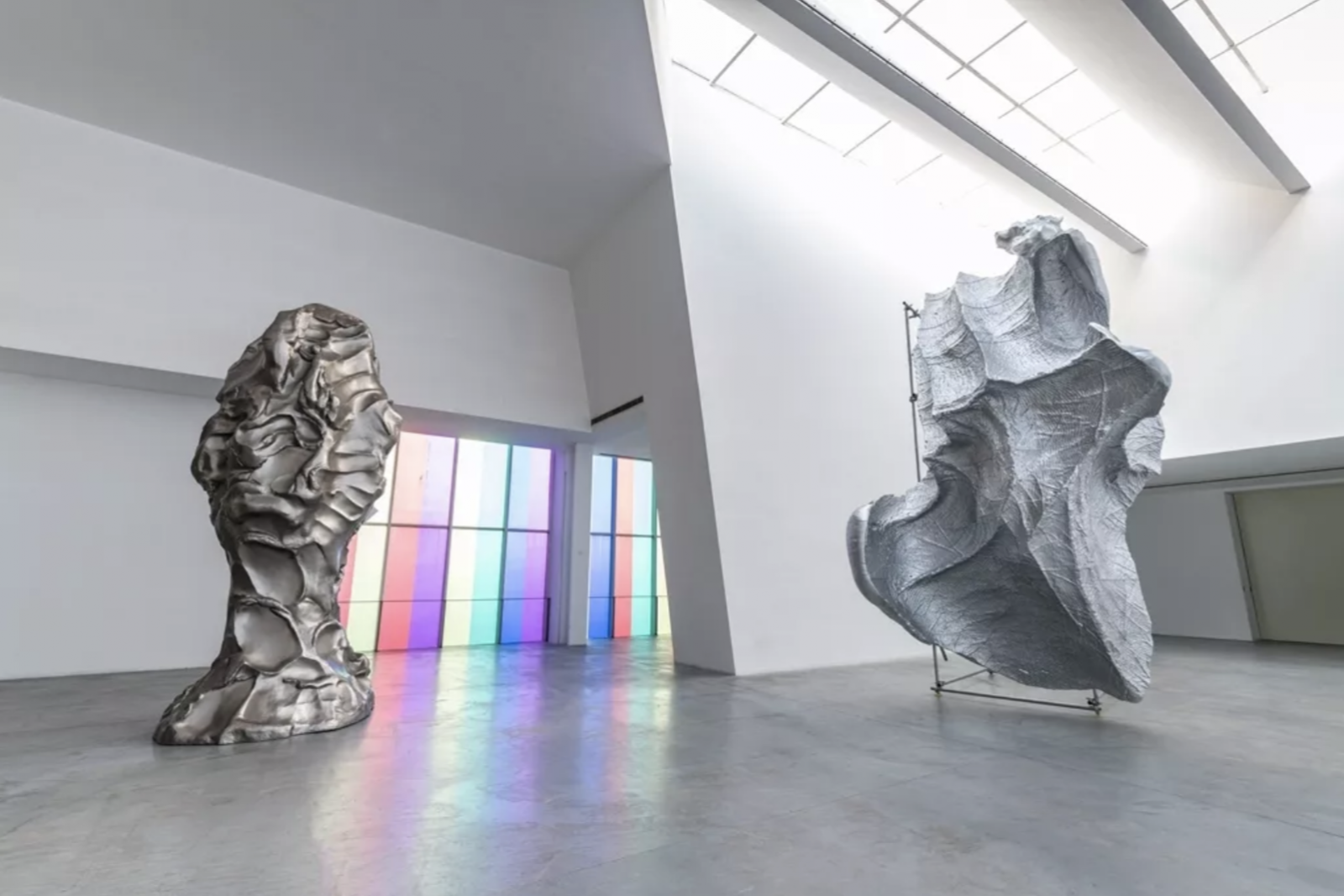 Photos: Exhibition View of ECHO OF SYSTEM
Photos: Exhibition View of ECHO OF SYSTEM
Reconstruction of Classicism, Complexity of the Epoch
Before the reform and opening up, the Western classical realism system from Europe, America, and the Soviet Union became the model. In the following 40 years, modern and contemporary sculptures in China began to undergo developments and tremendous changes.
“Cloth Vein Study—Right Hand” in the central gallery on the first floor, invites spectators to enter into the exhibiting area of “Legacy Mantel” with a group of works around the theme of “CLASSICISM IN CONTEMPORARY THEORY” right in front of the entrance. At the end of gallery, “Mao Suits” look silent and grand; they are parallel to each other which creates a sense of solemnity. It creates an illusion, as if one stands in a Louvre-style gallery of classical sculptures, or in a temple with “Heavenly kings” with intricate thoughts and imagination.
 Photo: Photo: Sui Jianguo, Cloth Vien Study—Marx in China 13, 1998; painted fibreglass
Photo: Photo: Sui Jianguo, Cloth Vien Study—Marx in China 13, 1998; painted fibreglass
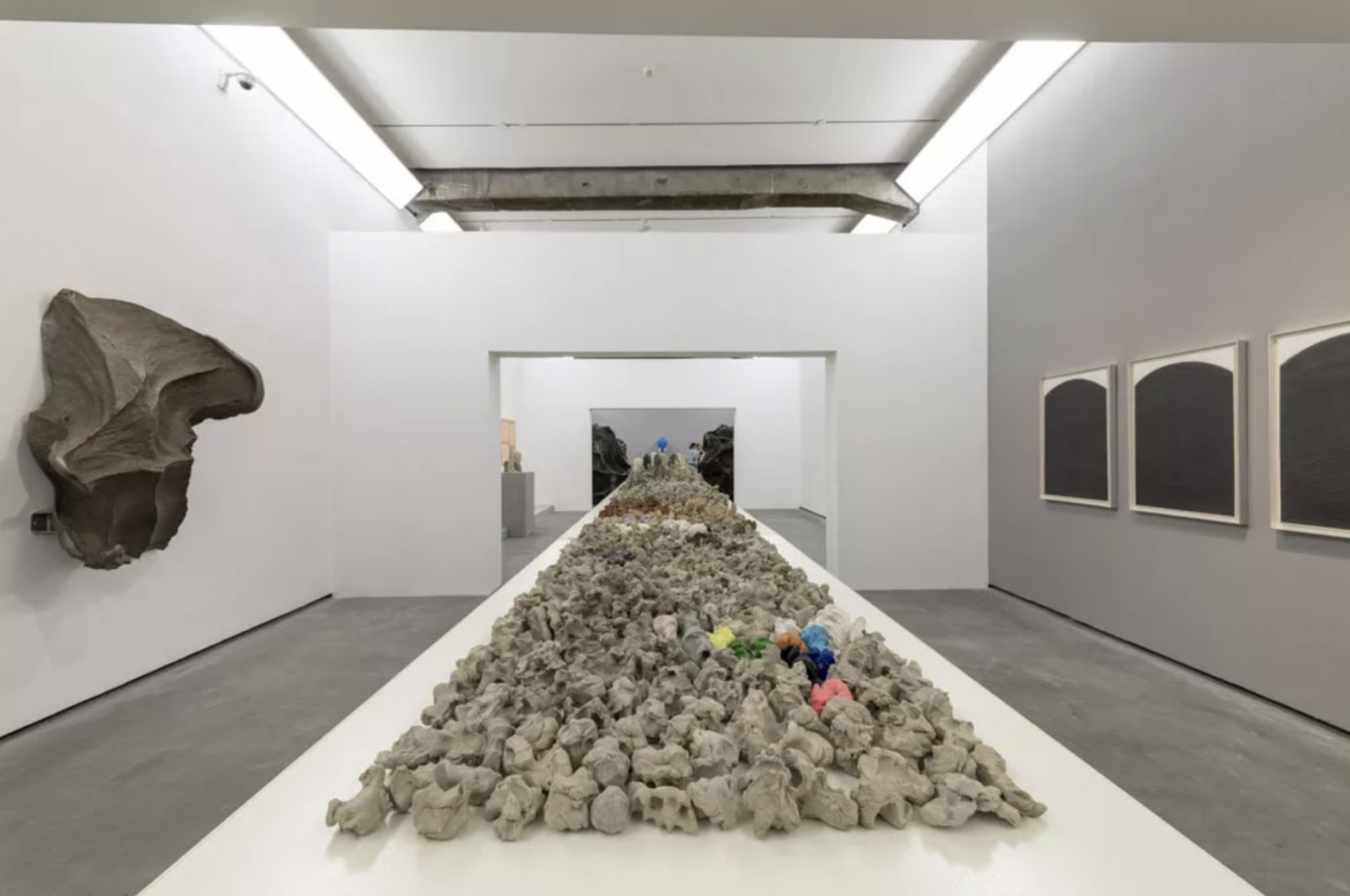 Photo: Exhibition View of ECHO OF SYSTEM
Photo: Exhibition View of ECHO OF SYSTEM
While looking around, “Jesus”, “Marx”, “Discobolus” and “Great Slaves” dressed in Mao Suits show a dramatic contrast. Western “thoughts, doctrines, and models” have led to a judging of standards, so where can Chinese own modern roads and aesthetic beliefs be found? Does it ignite the equality of values when a unified modelled coat is put on? Under the huge hollow body, what should be used to fill the spirit? Sui Jianguo reinterprets the classical category of works and presents reflections and deconstructions on the national and artistic roads over the past century.
After the millennium, thought trends and standards have been subjected to constant innovation, and everything has been greatly affected by the influence of consumerism. In the chapter “THE COMPLEXITY OF GLOBALISATION AND CONSUMERISM” the “dreary” pile of works reveal a form of information: Sui Jianguo has also stepped into a ‘disorderly middle ground” in his art explorations.
The symbolic sculptures of “Mao Suits” are reproduced in multiple colors and array; representative of social entrepreneurs and public figures who are embedded in the flesh of the “new discobolus”, lined up with the same posture and different appearances; lovely pandas, as well as fairy tales of the windmill cows create a pleasant atmosphere, where realism and contemporary art are juxtaposed. All the works, in a complex and magical exhibition space, mirror and blend well with each other.
 Photo: Sui JIanguo, MADE IN CHINA, 2005; neon lamp L2000cm
Photo: Sui JIanguo, MADE IN CHINA, 2005; neon lamp L2000cm
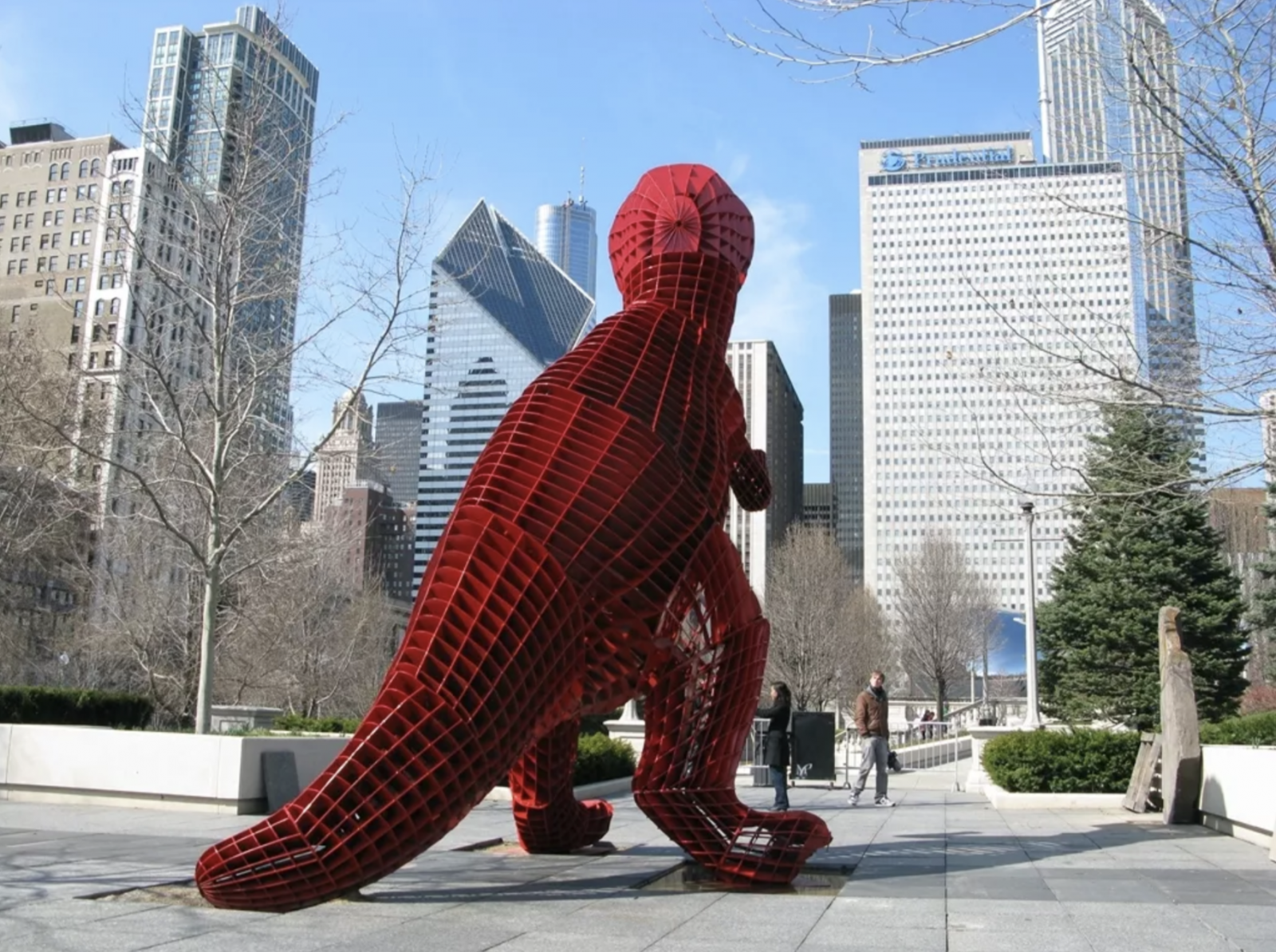 Photo: Sui Jianguo, Dinosaur of Windy City, 2009; steel structure, H540cm
Photo: Sui Jianguo, Dinosaur of Windy City, 2009; steel structure, H540cm
Curator Cui Cancan commented: “Sui redirected his attention from the idea of sculpture itself to the focus of conflict of sociological narratives and popular culture.” Here “MADE IN CHINA” and “THE DINOSAURS” are presented as special units. Both of them adopt the concept of ready-made products. “MADE IN CHINA” branded the most realistic and specific social relationship. The giant red stamps of “MADE IN CHINA” and the deconstructed slice of dinosaurs obtained a visual dominance through amplification while challenging people’s experience of visiting the exhibition.
As Sui Jianguo once said, “An epoch creates individuals, and individuals also highlight the epoch.” In the era of globalisation, artists’ perceptions, reflections, and feedback on cultural symbols are concentrated under the externalisation of these ideas. They do not just witness and tell about the past, but they do hint at the future.
The Motivation of Conceptual Art

 Photo: Exhibition View of ECHO OF SYSTEMS
Photo: Exhibition View of ECHO OF SYSTEMS
Sui Jianguo’s solo exhibition has aroused a strong sense of feelings about change. When he shuttles through different “systems” he will suddenly jump to the era when he “presents”. In 2006, he entered a crucial period of conceptualism. Through 900 km away from the remote control of other people, he created paintings; more than 10 positions set to record the video of a travelling train; jointly pushing a car to more than 50 meters away…Obviously, Sui Jianguo’s eyes shifted to the study of creative behaviour and the process of presentation.
The image and result of creation cease to be the artist’s purpose, the concept is prioritised and the moving images, installations, and performances become another means of “sculpture.” Manuscripts, sketches, and production methods in action become a part of the work. This also opened up new perspectives and new models for Sui Jianguo.
The work at the latter exhibition hall, “Three Stones” reinforces the conception. Stones that have been grabbed at random become the creative body and the origin, and it has the meaning of “nature is the creator.” The artist broke an established purpose. The contingency and randomness dominated the creation. Everything was attributed to fate, but then they were given new meaning by human beings. At the end of the first floor, the huge ball of the movement was recorded differently. The image of the trajectory may be a metaphor for the trajectory of Sui Jianguo’s trekking. He walked between various “isms”, introspected, reconstructed, and communicated, with thousands of turns and often overlapped, but never stopped. At this point, Sui Jianguo’s joint work with other trends that began in 1997 was approaching its end.
Shuttling through Clouds in the Garden to Capture the Shape of Time
“Limited scenes. Form a space that is indispensable, everything is visible, considerable, and sensible; infinite creations, pointing to a trend of change at any time, like the beginning of a dark tunnel.”

 Photos: Exhibition View of ECHO OF SYSTEM
Photos: Exhibition View of ECHO OF SYSTEM
Although a tunnel is dark, there is light guiding in the darkness. The 50-year-old Sui Jianguo found a “skull” which was dug up occasionally, and he naturally accepted the thought of “knowing one’s fate in one’s fifties” which also triggered the capture and interpretation of “uncertain”.
Since 2008, he has pushed the concept further, and the second floor has concentrated on important works from 2008 to 2019. The “Cloud Garden” series built by the scaffolding in the middle hall is like a silver stalactite cave, glittering and light, but also huge and heavy. This “cloud” is not a cloud,” but is intended to be a drive storage, created by 3D printing via photosensitive resin, hand-scratch traces and fine fingerprints are enlarged, subverting the inertia idea, the original accidental small piece of “mud” through an art conversion has obtained the monumental attention of the public, the ancient “mud” has been re-interpreted. Sui Jianguo once expressed his views on new technologies: “3D printing technology has become a new ‘artificial organ’ beyond the original vision and the touch of human beings.” The original sculpture characteristics have obtained vitality with the intervention of emerging technologies. With extraordinary shock, they occupy the entire field.
Then, the four spaces of “behaviour and action”, “proportion and cutting”, “material and surface” and “work site” are connected and followed the previous space. Since 2008, Sui Jianguo has used sculpture as an object of imitation. He started with the basic modelling rules, smashing, pinching, pulling, and cutting from the combination, zooming in, zooming out, cutting, etc… The core is placed on exploration and dialogue, and he realises the infinite possibilities between “the instrument and the Tao”. The massive group of objects have different forms, mixed with time and behaviour, and they become the “material evidence” of the externalisation of thinking, the record of action and the concept.
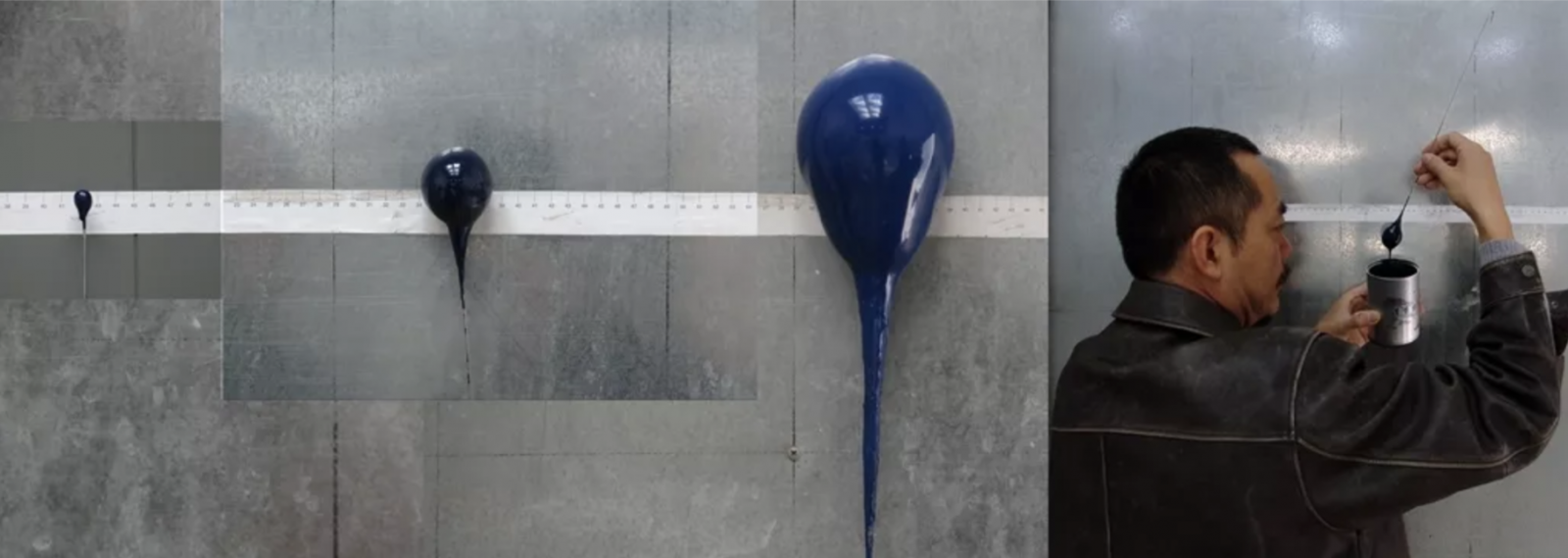 Photo: Sui Jianguo, Shape of Time, 2016-2018; paint
Photo: Sui Jianguo, Shape of Time, 2016-2018; paint
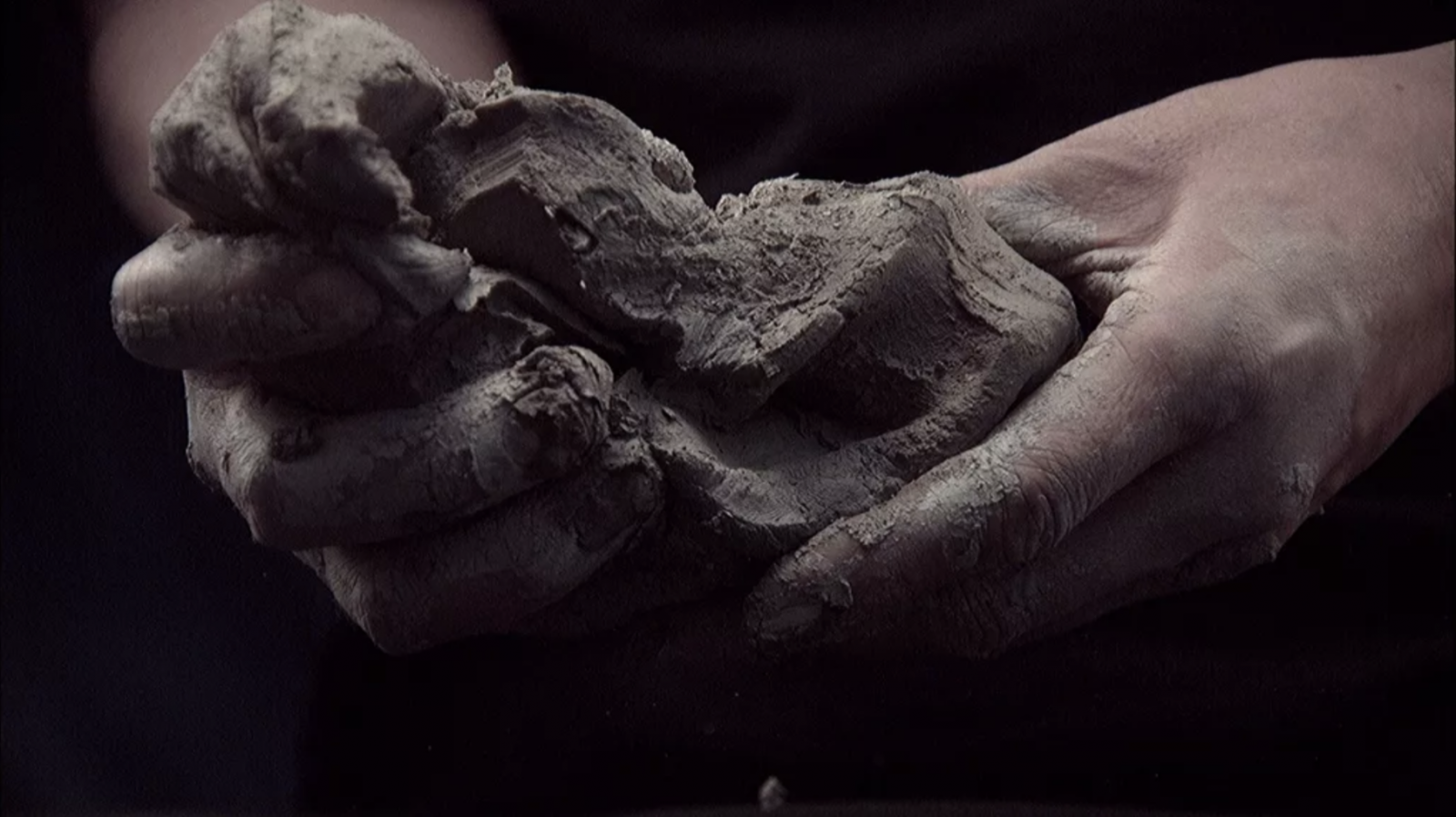 Photo: Sui Jianguo, Physical Trace, 2012; video projection, 7m18s
Photo: Sui Jianguo, Physical Trace, 2012; video projection, 7m18s
Through this pile of meteorites in various shapes, the reverberating “system” will excite more intense resonances in the cavity. More than 1,430 manuscripts in different sizes and shapes in the South Gallery run through the central axis. At the end, the “Shape of Time” is the starting point for the whole story. The blue paint ball that has solidified for twelve years suddenly broke the fantasy for time: people will feel incredible, does time really have shape? What is the shape of other people’s time?
The existence of the abstract change of “time” is still inconclusive. People can only describe it by individual reference. This kind of implication and mystery is not separated from its source. As Cui Cancan said: “‘The Shape of Time’ echoes the most central part of Sui Jianguo’s concept of creation; that is, the constant transformation of time and space, the beginning of a dark tunnel, the formation of a new concept of time and space and a world view.”
On the two sides of the central axis of the exhibition hall, there are six different spaces which display the earliest mud drafts and various details of the “Portrait of the Blind” where the artist’s creative process is clearly visible. Sui Jianguo said: “From the time of ‘The Blind Portraits’ in 2008, I put my body and its movements at the core of the work. In day-to-day work, the sculptor’s body and repetitive sculptural movements (behaviours) are as important as the finished sculptures. The sculptural medium is the field of the sculptor’s actions and movements; the sculpture is a proof of the presence of the sculptor’s body and sculpture.”
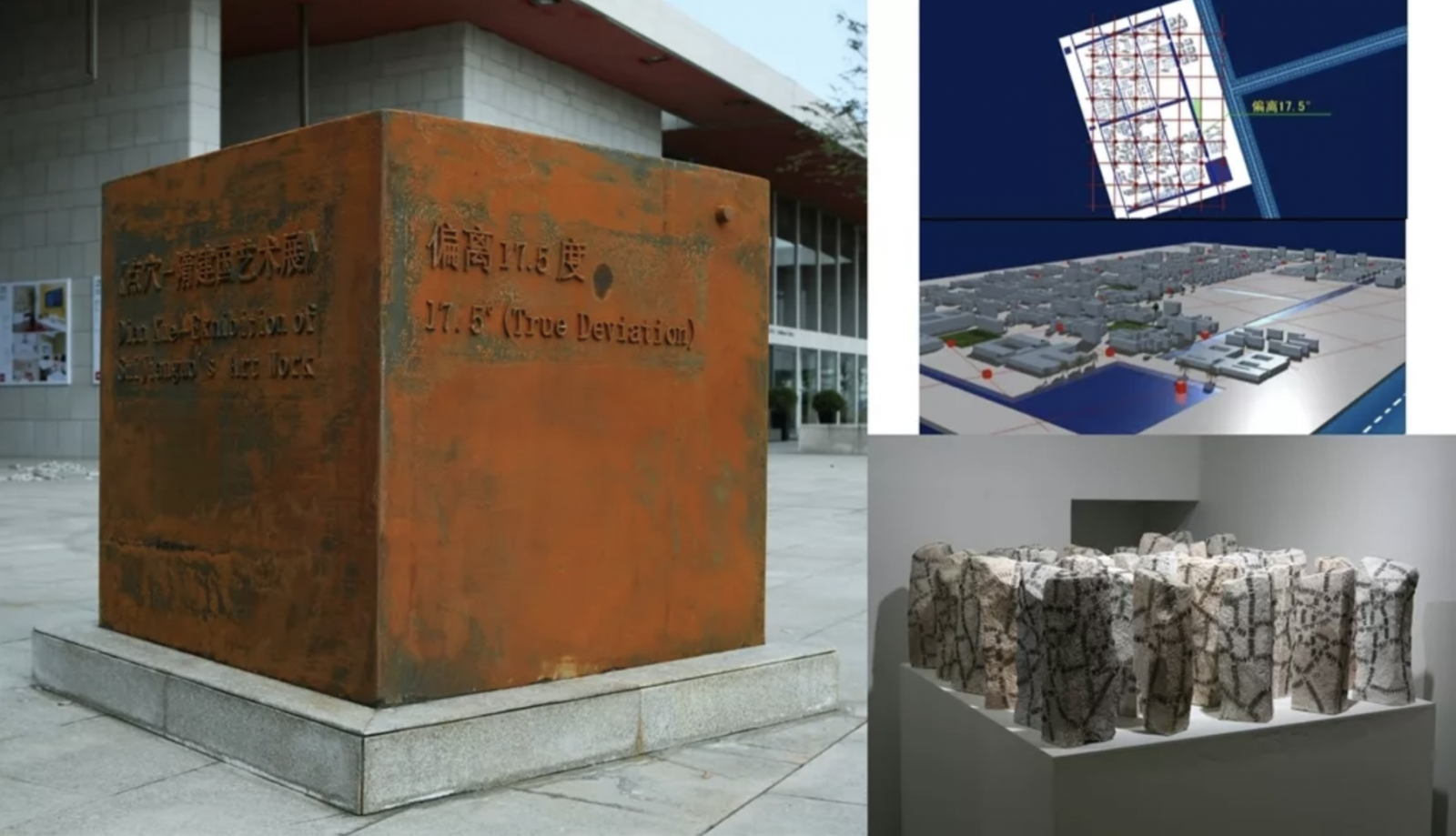 Photo: Sui Jianguo, Deviation from 17.5 ° Installation, 2007; cast steel, 120cm × 120cm × 120cm
Photo: Sui Jianguo, Deviation from 17.5 ° Installation, 2007; cast steel, 120cm × 120cm × 120cm
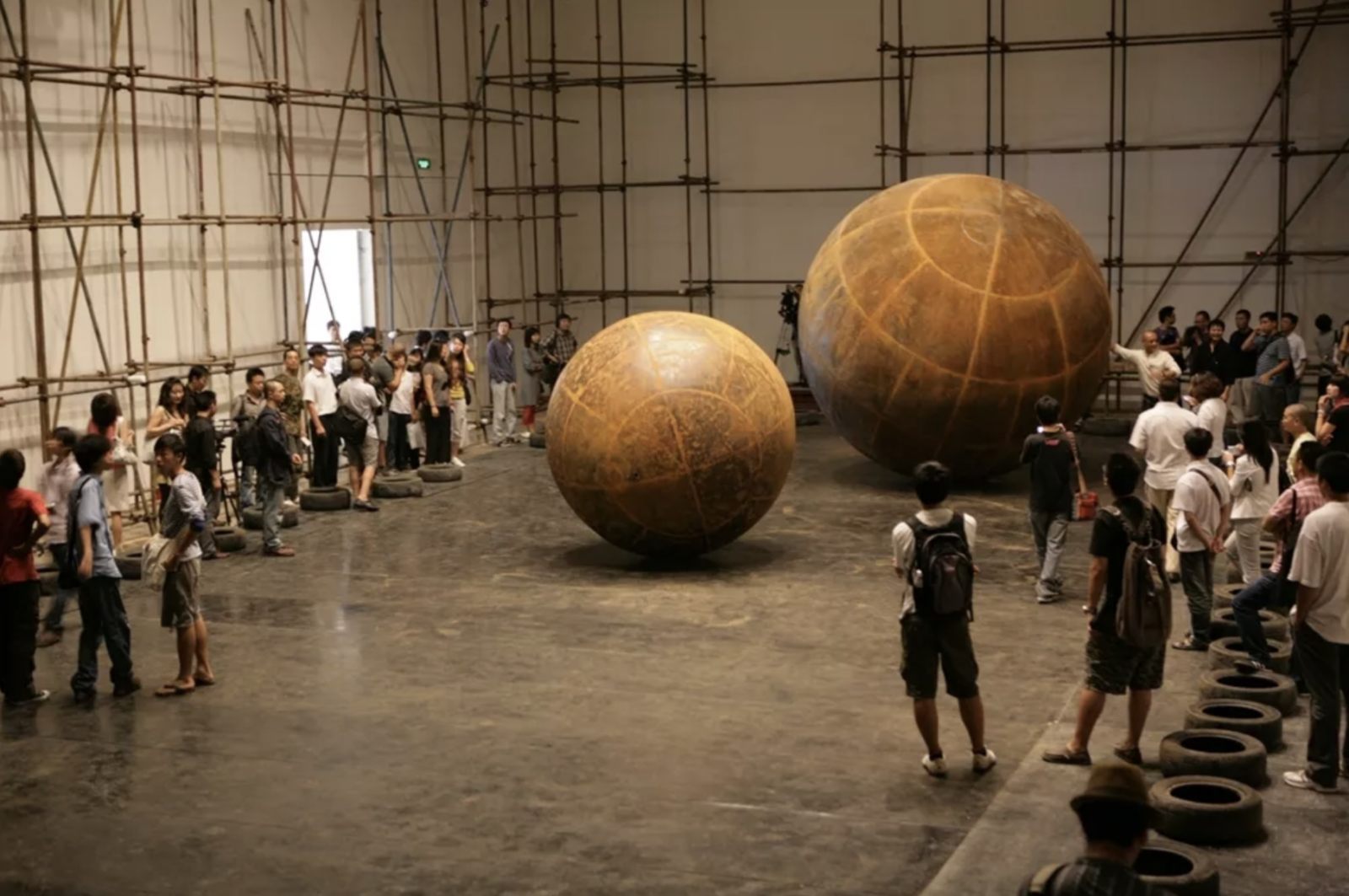 Photo: Sui Jianguo, Motion and Tension, 2009; steel and electric machine, dimensions variable
Photo: Sui Jianguo, Motion and Tension, 2009; steel and electric machine, dimensions variable
In this long and complicated system, the intervention of behaviour, the accumulation of time, and the change of ideas are all revealed, and one of the factors that we cannot ignore is the technical renewal, and its intervention has no doubt a great influence on Sui Jianguo’s creation.
Both the curator and the artist mentioned the important value of technology. “If there is no 3D printing, traditional sculpture cannot be used to cut the fingerprints.” The production method is important but the artist is more valuable.
“Body in 3D” becomes the final conclusion of the exhibition hall. “It ends the history of imitating nature, expressing emotions or ideas in the history of sculpture.” Obviously, from “The Shape of Time”, more than 1,430 manuscripts to “Body in 3D”, Sui Jianguo injected these thoughts into the works for more than ten years, and the “unfinished, lively feelings” which are deliberately reserved will inevitably create a situation of dialogue with the audience, and he also intends to stimulate different thoughts.


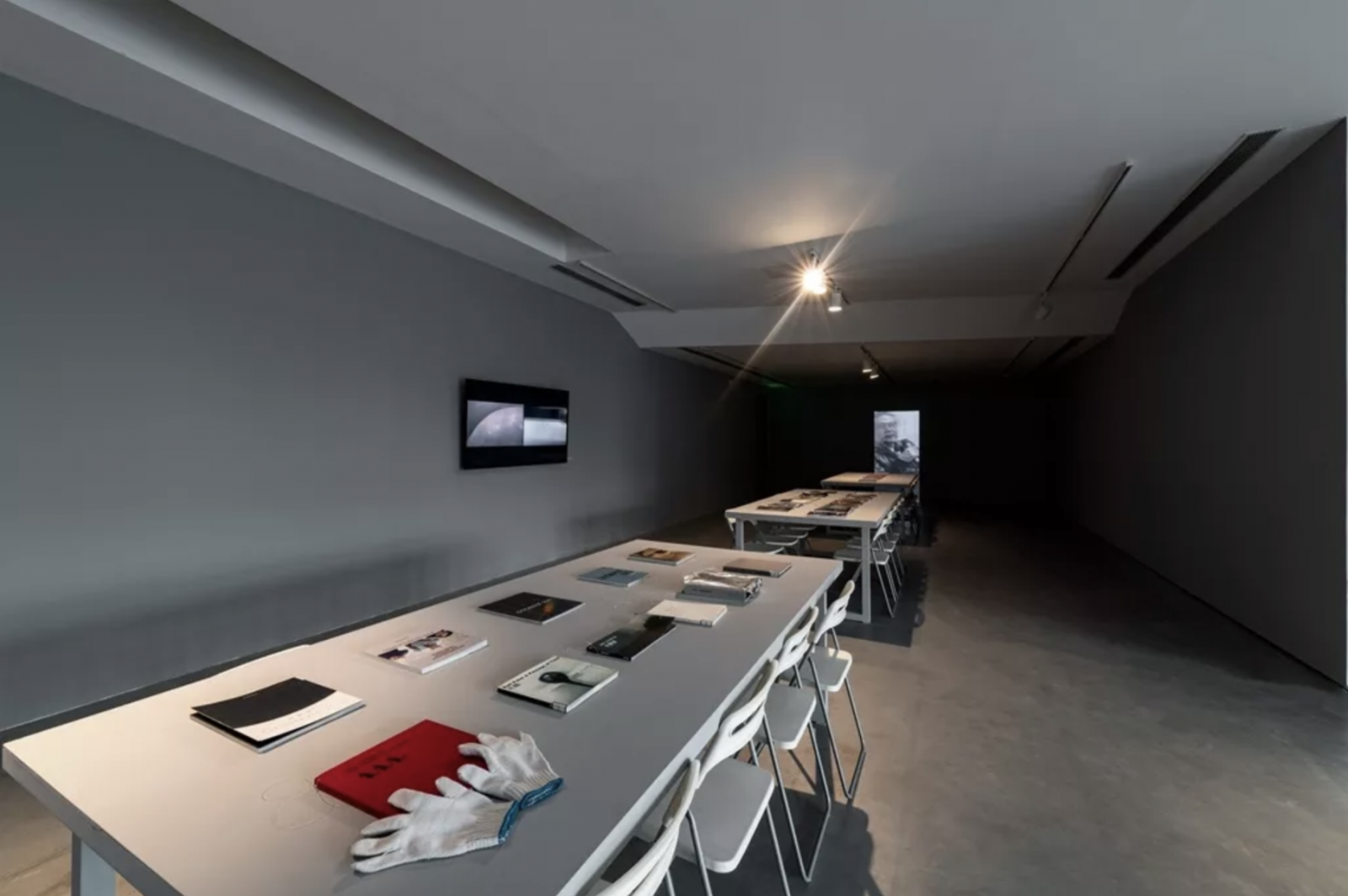 Photos: Exhibition View of ECHO OF SYSTEM
Photos: Exhibition View of ECHO OF SYSTEM
When technology has a qualitative impact on the connotation and extension of sculpture, the boundaries of art are constantly being dispelled and expanded. The old system is being broken, the context is expanding, and the future is going to evolve. The artists, as if they were born with insight, thinking, and action challenge the solidified experience. The system can be reformed, destroyed, and restructured to welcome the establishment of a new system. From the beginning to the end, the artist is the core of energy.
Text by Zhang Yizhi
Translated by Sue/CAFA ART INFO
Additional edits by ArtChina UK
Photo Courtesy of the Organizer
